Investing in an industrial gas-fired boiler is a long-term decision that impacts your plant’s energy efficiency, safety, emissions compliance, and operational reliability. While equipment performance is key, so is the competence, transparency, and support offered by the supplier. Asking the right questions will help you identify a partner who can deliver a complete, compliant, and cost-effective boiler solution—not just a product.
To assess potential industrial gas-fired boiler suppliers, ask questions about thermal efficiency, burner technology, emissions performance, automation systems, compliance standards, spare parts availability, project references, and after-sales service. Verify their ability to provide real-time monitoring tools, support fuel flexibility (e.g. LPG, LNG, biogas), and deliver high turndown ratios for part-load operation. These inquiries help uncover technical strengths, operational support, and long-term service value.
Use the following checklist to guide a comprehensive supplier evaluation.
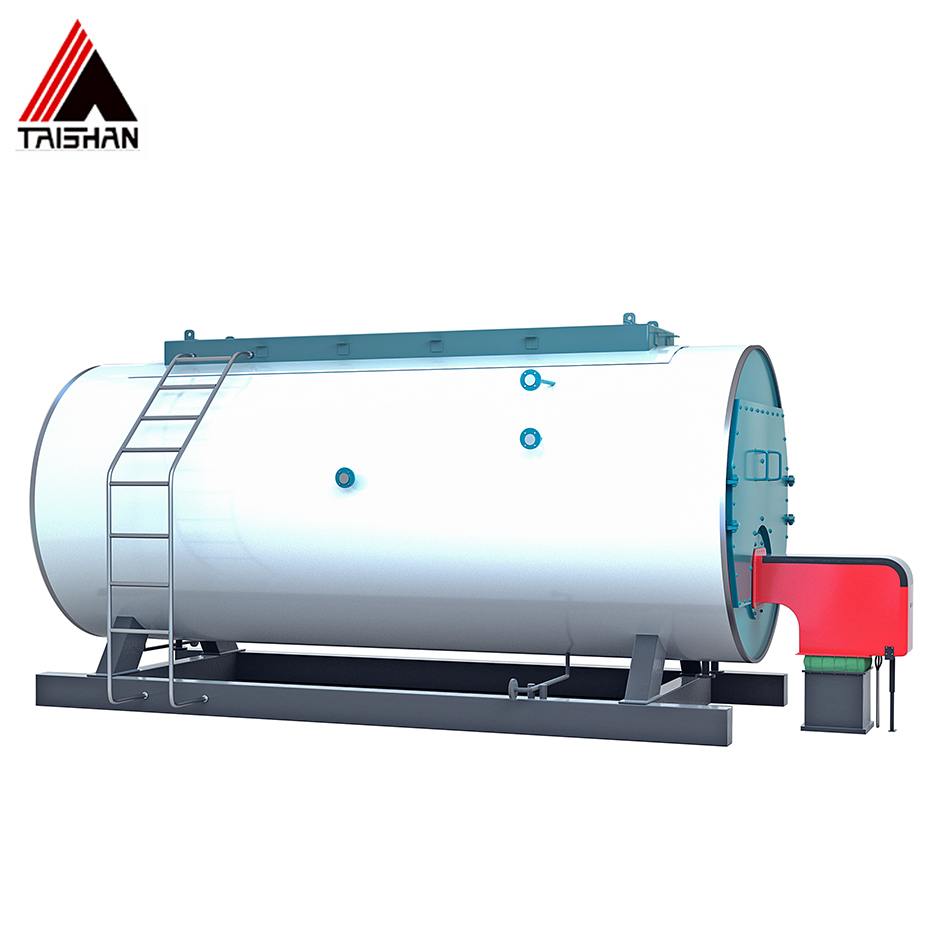
What Is the Guaranteed Thermal Efficiency and Turndown Ratio Under Different Load Conditions?
In industrial gas-fired boiler systems, efficiency and flexibility must coexist. While thermal efficiency at full load determines your base fuel cost, the turndown ratio defines how well your boiler can operate under varying demand—without excessive cycling, fuel waste, or emissions instability. As production loads fluctuate throughout the day, a boiler with poor part-load efficiency or limited turndown will cost more to operate and wear out faster.
Buyers should ask the supplier for guaranteed thermal efficiency values at multiple load points (e.g., 100%, 75%, 50%) and confirm the turndown ratio—defined as the maximum-to-minimum firing rate at which the system can operate reliably. These guarantees must be based on specific fuel types (natural gas, LPG, biogas), test standards (ASME PTC 4, EN 12953), and ambient/fuel conditions.
A boiler that performs well only at peak load is not enough—it must perform efficiently across every shift, every hour.
Guaranteed thermal efficiency and turndown ratio across load conditions are essential metrics for optimizing fuel cost, reducing emissions, and ensuring reliable operation in gas-fired boilers.True
Gas-fired boilers with higher turndown can respond to load variation without shutdown, while part-load efficiency prevents energy losses during low-demand periods.
What You Need to Ask About Efficiency and Turndown
1. What Is the Guaranteed Thermal Efficiency at Various Loads?
| Load (%) | Typical Efficiency (LHV Basis) | Expected Performance |
|---|---|---|
| 100% | 94% – 96% | Optimal burner flame and heat recovery |
| 75% | 92% – 94% | Minimal loss if well-tuned |
| 50% | 89% – 92% | Burner and air control crucial |
| 25–30% | 85% – 90% | Requires staged modulation or parallel burner logic |
Ask:
Are efficiency guarantees based on LHV or HHV?
What fuel properties were assumed (CV, pressure)?
Is flue gas condensation used in the test setup?
2. What Is the Rated Turndown Ratio and How Is It Achieved?
| Boiler/Burner Type | Typical Turndown | Mechanism |
|---|---|---|
| Modulating burner | 5:1 to 10:1 | PID control, air/fuel trim |
| Dual burner setup | 10:1 to 15:1 | Stage sequencing |
| Ultra-low NOₓ premix burner | Up to 15:1 | VFD-driven fan, flame scanner feedback |
| Condensing boiler | 5:1 to 8:1 | Enhanced exchanger design |
Ask:
Can you maintain combustion stability at minimum firing rate?
Is turndown automatic or manually adjusted?
Are emissions compliant at low load?
3. What Happens to Emissions at Low Load?
| Parameter | High Load | Low Load Risk | Mitigation |
|---|---|---|---|
| NOₓ | 30–50 mg/Nm³ | May increase if flame destabilizes | Burner geometry control |
| CO | <50 mg/Nm³ | Can spike with incomplete combustion | Flame monitoring and trimming |
| O₂ | 3–5% optimal | Can rise with excess air | Modulated fan control |
Ask:
Are NOₓ/CO guarantees valid across all load conditions?
Do you tune burner curves for partial-load operation?
Are sensors calibrated at both low and high firing rates?
4. Can You Provide an Efficiency and Turndown Curve?
| Graph Type | What It Should Show |
|---|---|
| Efficiency vs Load | Line or curve from 100% to minimum |
| Fuel Consumption vs Load | Nm³/hour per ton of steam |
| Turndown Diagram | Burner modulation range and logic |
| Emissions vs Load | NOₓ, CO drift at part-load |
Ask:
Is the curve validated with test data?
Are your systems third-party verified for guarantees?
Can we log this data through your SCADA?
Example: 12 TPH Natural Gas-Fired Boiler Performance Table
| Load Level | Steam Output | Efficiency (LHV) | Fuel Consumption (Nm³/h) | NOₓ Emission |
|---|---|---|---|---|
| 100% | 12 TPH | 95.1% | 865 Nm³/h | 36 mg/Nm³ |
| 75% | 9 TPH | 93.2% | 678 Nm³/h | 38 mg/Nm³ |
| 50% | 6 TPH | 91.5% | 504 Nm³/h | 41 mg/Nm³ |
| 30% | 3.6 TPH | 88.4% | 324 Nm³/h | 45 mg/Nm³ |
Turndown Ratio: 6.5:1
Fuel: Natural gas at 38 MJ/Nm³
Tested: ISO 23145-1, verified by TÜV
Emissions Compliant Across Loads: YES
Summary
A high-efficiency gas boiler that only performs well at full load leaves energy savings—and emissions targets—on the table. Ask your supplier for clear guarantees of efficiency and emissions at partial loads, and confirm turndown capabilities with proven burner technology. Choose flexibility without fuel penalties. Choose flame stability in every hour. Choose a boiler that adapts to your plant—not the other way around.
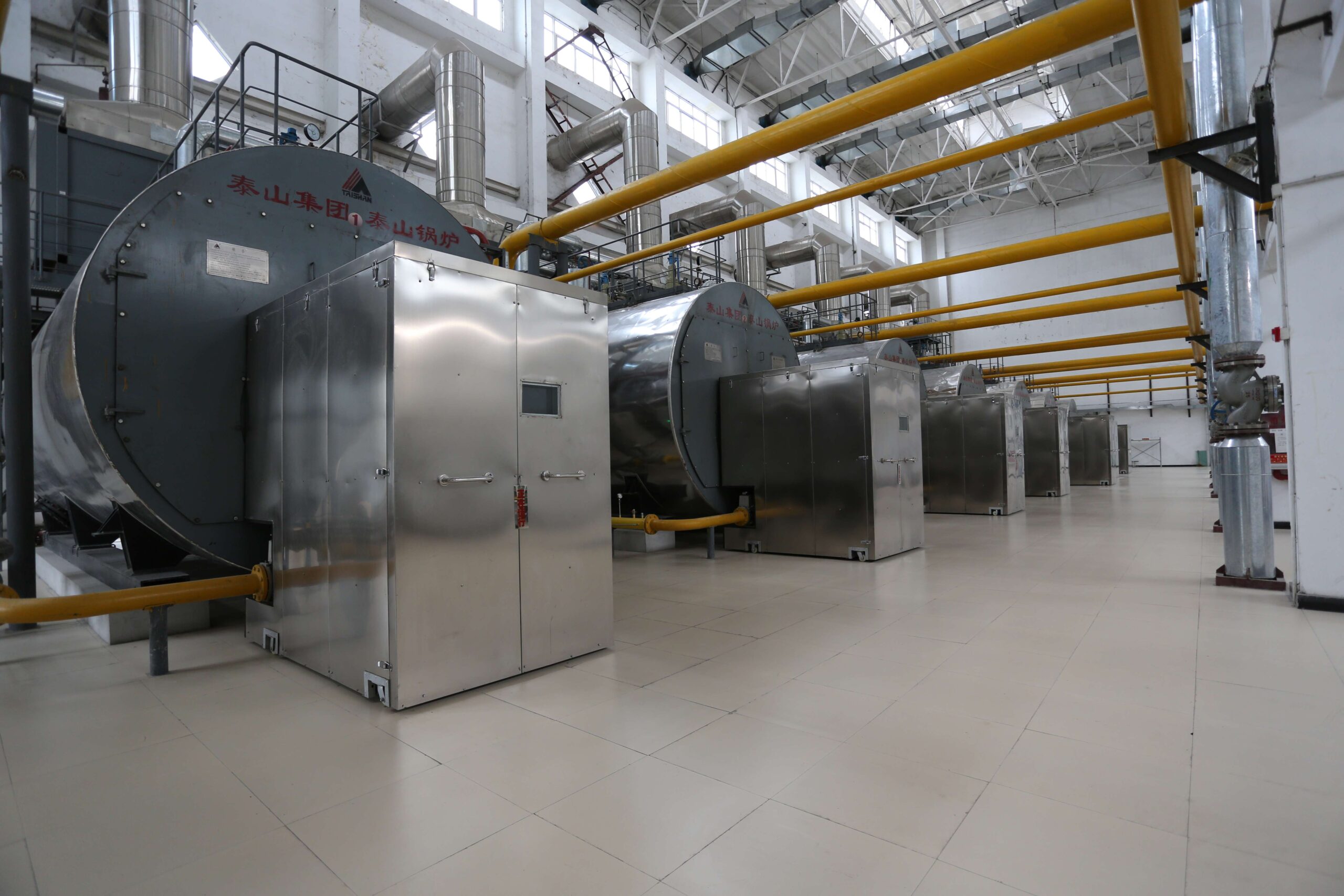
What Burner Types Do You Use, and How Do They Manage NOₓ and CO Emissions?
For industrial gas-fired boilers, the burner is the heart of combustion performance—and the front line of emissions compliance. Whether you’re burning natural gas, LPG, or biogas, achieving low NOₓ (nitrogen oxides) and CO (carbon monoxide) emissions without compromising efficiency depends entirely on the burner’s design, flame control, and air-fuel management.
Buyers must ask the supplier what burner type is used—whether it’s premix, staged, flue gas recirculation (FGR), or ultra-low NOₓ design—and how it achieves emissions control. Confirm the design basis, performance guarantees, burner modulation range, and NOₓ/CO performance under full and part loads.
Choosing a high-spec boiler without asking about the burner is like buying a car without checking the engine—it’s what makes everything else work.
The type of burner and its emissions control strategy directly determine a gas-fired boiler's ability to meet efficiency, NOₓ, and CO emission targets.True
Premix and staged burners with proper air/fuel control reduce thermal NOₓ and CO formation, while enabling stable combustion across turndown ranges.
Key Burner Design Questions You Must Ask
1. What Type of Burners Are Offered or Integrated in Your System?
| Burner Type | Design Principle | Emissions Control Capability |
|---|---|---|
| Premix burner | Fuel and air mixed before ignition | <30 mg/Nm³ NOₓ, very low CO |
| Staged (Low-NOₓ) | Primary/secondary air zones | NOₓ <50 mg/Nm³, CO ~30 mg/Nm³ |
| FGR burner | Recycled flue gas lowers flame temp | Ultra-low NOₓ, often <25 mg/Nm³ |
| High-turbulence burner | Extended flame zone reduces hotspots | Good CO control, moderate NOₓ |
| Modular burner (multi-nozzle) | Combines staging and recirculation | Excellent modulation, stable flame |
Ask:
Is the burner premix, staged, or dual-mode?
Who is the burner manufacturer—OEM or licensed design?
Is the burner suitable for both LHV and HHV fuels?
2. How Is NOₓ Emissions Reduction Achieved in the Burner Design?
| NOₓ Formation Mechanism | Mitigation Technique |
|---|---|
| Thermal NOₓ (from high flame temperature) | Flame temperature reduction (FGR, staging) |
| Prompt NOₓ (from nitrogen in fuel/air) | Rapid mixing, reduced residence time |
| Peak temperature control | Wide, lean flames and premix tuning |
Ask:
What NOₓ emissions do you guarantee at 100% and 50% load?
Are the NOₓ values achieved without post-combustion treatment (e.g., no SCR)?
Can we fine-tune NOₓ levels via air/fuel ratio or burner logic?
3. How Is CO Controlled Across the Load Range?
| Risk at Low Load | Burner Feature for CO Control |
|---|---|
| Incomplete combustion | Flame stability sensor feedback |
| Poor air-fuel ratio | Auto-trim control, staged firing |
| Low flame temp | Proper flame geometry, turndown tuning |
Ask:
What CO levels do you guarantee (<50 mg/Nm³, <20 mg/Nm³)?
Are CO limits maintained at 30–40% load?
Do you provide O₂ trim + CO sensors for feedback control?
4. Is the Burner Matched to Boiler Geometry and Load Response?
| Design Factor | Importance |
|---|---|
| Furnace volume vs flame length | Prevents flame impingement |
| Flue gas velocity vs flame propagation | Ensures flame stability |
| Load response time | Impacts emissions and fuel use during swings |
Ask:
Was the burner selected specifically for this boiler type?
Can flame length or profile be adjusted if fuel properties change?
How is flame failure risk mitigated under part-load?
5. Do You Offer Burner Performance Testing and Certification?
| Test/Verification | Purpose |
|---|---|
| Factory acceptance test (FAT) | Confirms NOₓ/CO under controlled conditions |
| On-site commissioning tuning | Adjusts flame geometry and modulation curve |
| Emissions report (EN 676 or local) | Legal compliance proof |
| Flame camera or UV scanner calibration | Ensures real-time flame detection and alarm |
Ask:
Can you show previous emissions test reports?
Is burner tuning provided during commissioning?
Do you issue a burner performance certificate?
Example: Premix Low-NOₓ Burner on 10 TPH Gas Boiler
| Load (%) | Efficiency (LHV) | NOₓ (mg/Nm³) | CO (mg/Nm³) |
|---|---|---|---|
| 100% | 95.2% | 28 | 18 |
| 75% | 93.4% | 30 | 20 |
| 50% | 91.0% | 32 | 25 |
| 30% | 88.5% | 35 | 29 |
Burner Type: Premix with staged air injection and variable speed fan
Turndown Ratio: 8:1
Control: PLC-based modulation with O₂/CO feedback
Certifications: EN 676-compliant, TÜV-tested emissions guarantee
Summary
The burner is where combustion starts—and where emissions must be controlled from the very first spark. Don’t settle for vague specs. Ask your supplier to show you burner type, flame logic, emissions guarantees, and load-matching performance. Because a boiler is only as clean and efficient as the burner at its core. Choose engineered flames. Choose emissions by design—not afterthought. Choose a burner system that earns your fuel budget’s trust.
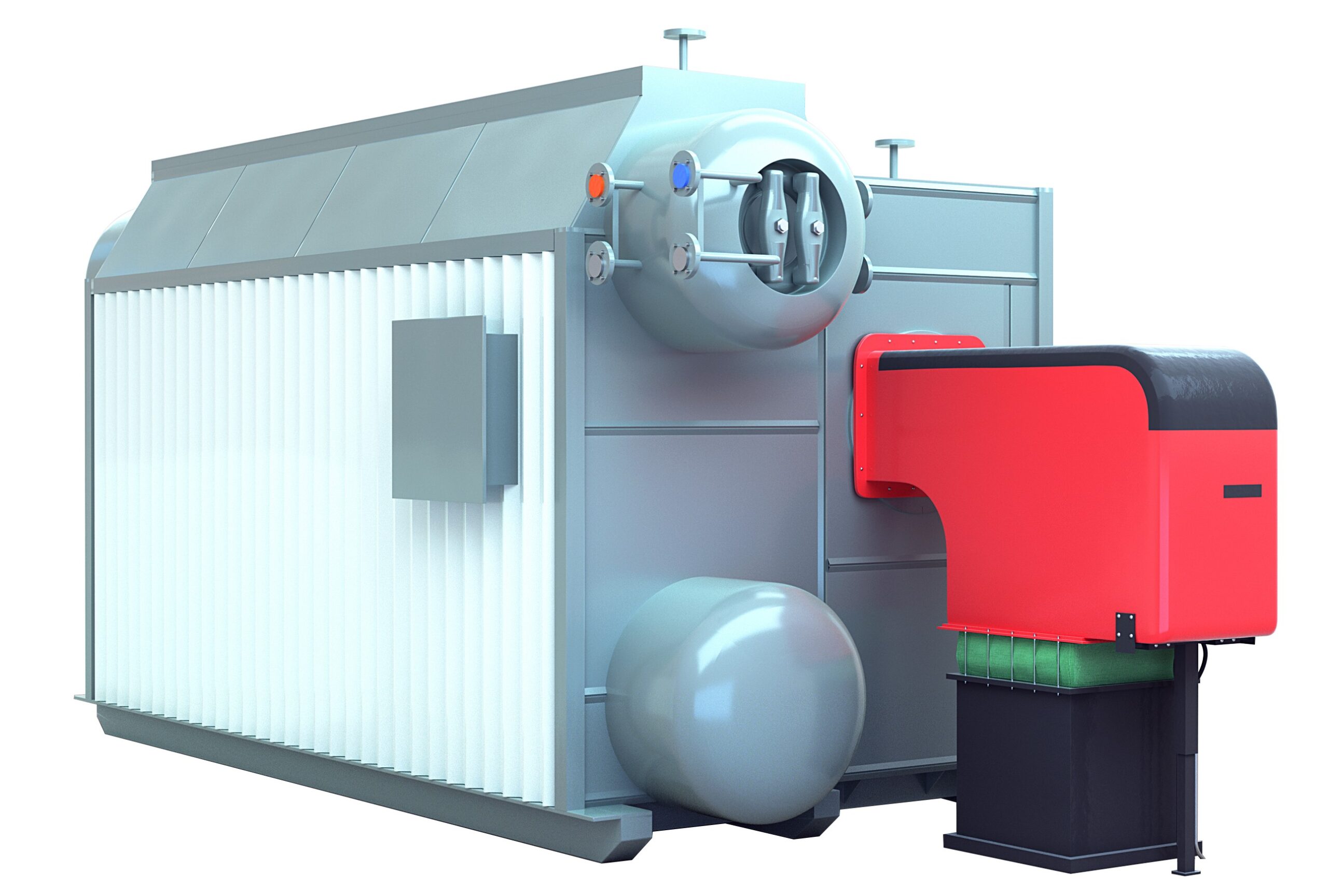
What Certifications and Manufacturing Standards (ASME, ISO, CE) Does Your System Meet?
For gas-fired industrial boilers, internationally recognized certifications and manufacturing standards are not just formalities—they are essential for regulatory approval, operational safety, insurance compliance, and market access. Whether you’re operating in the EU, North America, Middle East, or Asia-Pacific, your boiler must meet the design, fabrication, and quality assurance benchmarks defined by globally accepted codes like ASME, CE PED, and ISO.
Buyers must request full transparency about the certifications a supplier holds—including ASME “S” or “U” stamps for pressure vessels, CE marking per the Pressure Equipment Directive (PED 2014/68/EU), and ISO 9001/14001/45001 for quality, environment, and safety management. Suppliers must also document compliance with burner and emissions regulations such as EN 676 (for gas burners) and provide traceable material certificates.
A boiler without verifiable certification is a risk—legally, operationally, and financially.
Certified compliance with standards like ASME, ISO, and CE PED is essential for safe, legal, and insurable operation of gas-fired industrial boiler systems.True
Certified systems undergo design review, quality audits, and safety testing—ensuring the boiler can legally operate and meet performance expectations in regulated markets.
Certification & Compliance Areas You Must Verify
1. Does the Pressure Equipment Comply With ASME Boiler & Pressure Vessel Code?
| ASME Certification | Scope | Required For |
|---|---|---|
| ASME “S” Stamp | Power boiler (Section I) | Main pressure vessel, steam drum |
| ASME “U” Stamp | Unfired pressure vessels (Section VIII) | Economizer, deaerator, blowdown tank |
| ASME Section IX | Welding qualifications | All pressure-retaining joints |
| ASME Section V | Nondestructive testing (NDT) | RT, UT, PT for weld inspections |
Ask:
Is your boiler ASME “S” stamped with a valid Certificate of Authorization?
Do you provide full weld traceability and NDT reports?
Are hydrotests performed per ASME PTC 4 or equivalent?
2. Does the System Meet CE Marking and PED Compliance for EU Markets?
| Directive | Application | CE PED Modules |
|---|---|---|
| PED 2014/68/EU | Pressure parts, valves, safety devices | H, H1, B+D depending on system |
| Machinery Directive | Burner, actuator, fans | Mechanical safety and labeling |
| EMC Directive | Control panels, PLC/HMI | Electromagnetic compatibility |
| Gas Appliances Regulation (GAR) | Gas-fired burner units | EU burner compliance (EN 676) |
Ask:
Which notified body issued your CE PED certification?
Do you issue a full CE Declaration of Conformity?
Are all burner controls CE/GAR certified?
3. Is the Manufacturing Facility ISO Certified?
| ISO Standard | Purpose | Relevance |
|---|---|---|
| ISO 9001 | Quality management | Tracks material, inspection, NCRs |
| ISO 14001 | Environmental controls | Waste, emissions from manufacturing |
| ISO 45001 | Health & safety | Workshop safety compliance |
| ISO 3834 | Welding QA (optional but relevant) | Ensures WPS/PQR/WQT control |
Ask:
Is ISO 9001 certified by an accredited body (e.g., SGS, TÜV)?
Are supplier and subcontractor audits part of your QMS?
Can we review the quality manual and ITP before production?
4. Do Materials and Parts Have Traceable Certifications?
| Documentation | Purpose |
|---|---|
| EN 10204 3.1/3.2 MTCs | Material test certificates with heat number |
| Welding logs | Link each weld to welder, joint ID, inspection |
| Instrument calibration certificates | Validity for transmitters, PLC, CEMS |
| Burner test certificate (EN 676) | Verifies emissions at factory test |
Ask:
Are materials traceable to the source foundry?
Is a digital QA dossier provided with the system?
Can you show sample calibration reports for sensors?
5. Do You Provide a Full Compliance and Data Book Package?
| Included Documents | Verified By |
|---|---|
| Pressure part drawings, weld maps | QA and third-party inspector |
| Test certificates (hydro, burner, FAT) | Witnessed by client/authority |
| Electrical conformity (CE, EMC) | CE notified body |
| Commissioning checklist | Site engineer signed + stamped |
Ask:
Will we receive a printed and electronic data book?
Are digital logs linked to serial numbers and QR codes?
Do you support audit inspections or factory walkthroughs?
Example: 10 TPH Gas-Fired Boiler Compliance Snapshot
Certifications Held:
ASME “S” Stamp for steam drum and water walls
CE PED Module H approved by TÜV Rheinland
EN 676 compliant premix burner, <30 mg/Nm³ NOₓ
ISO 9001, ISO 14001, ISO 45001 manufacturing system
Full EN 10204 3.1 MTCs for all pressure parts (SA-516 Gr.70)
Factory Acceptance Test (FAT) with burner ignition, trip logic, SCADA demo
Delivered Documentation:
Digital QA book (PDF + searchable index)
CE Declaration of Conformity
Burner performance report (NOₓ/CO results)
ITP and weld log cross-referenced to drawings
Summary
When it comes to your boiler, certification is confidence—proof that it’s built to last, tested to perform, and safe to operate. Never accept undocumented claims. Ask for ASME stamps, CE modules, ISO system proofs, and fully traceable manufacturing records. Choose compliance not just as paperwork—but as performance integrity. Choose standards that protect your plant. Choose a supplier certified from flame to flange.
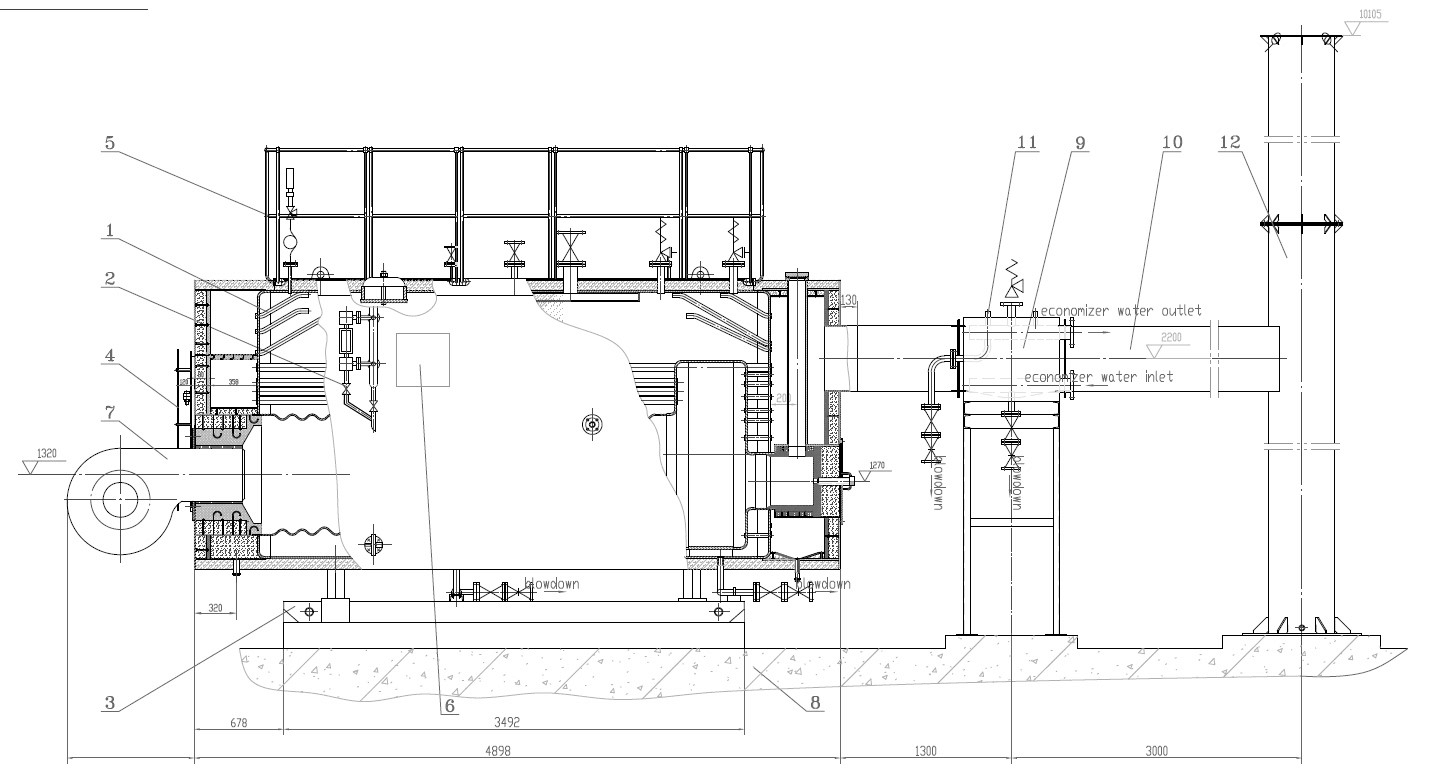
Can the Boiler Be Configured for Multiple Gas Types (LNG, CNG, LPG, Biogas)?
As industrial facilities strive for resilience, emissions compliance, and energy cost optimization, the ability to operate a boiler using multiple gas fuels—such as liquefied natural gas (LNG), compressed natural gas (CNG), liquefied petroleum gas (LPG), or biogas—has become a top priority. This capability allows plants to switch fuels based on availability, price volatility, or regulatory carbon intensity targets—without changing hardware or undergoing long retrofit shutdowns.
Buyers must ask if the boiler and burner system are compatible with multiple gas types, whether switching is automatic or manual, and what safety, control, and calibration modifications are required. Fuel flexibility should include valve train configuration, CV range tolerance, combustion tuning, and emissions control strategies.
Fuel diversity isn’t a feature—it’s an investment in long-term operational adaptability.
Multi-gas compatibility enhances energy security and flexibility in gas-fired industrial boilers.True
Gas availability and pricing vary across regions and seasons. A boiler that handles multiple gases—like LNG, LPG, and biogas—enables cost-effective and uninterrupted operation under changing conditions.
Key Areas to Clarify About Multi-Gas Fuel Compatibility
1. Which Gas Types Can the Boiler System Support?
| Fuel Type | Common Applications | Key Characteristics |
|---|---|---|
| LNG (Liquefied Natural Gas) | Off-grid industrial users | High methane, high CV |
| CNG (Compressed Natural Gas) | Urban/utility pipelines | Pipeline quality, ~38 MJ/Nm³ |
| LPG (Propane/Butane) | Backup/off-grid systems | High CV (~93 MJ/Nm³), different air ratio |
| Biogas (from digesters) | Waste-to-energy or food industry | Low CV (~20–26 MJ/Nm³), high moisture/H₂S |
Ask:
Which fuels are supported as standard vs with modification?
Can you provide test data or references using each fuel?
Are emissions still guaranteed for each fuel type?
2. Is the Burner Designed for Dual or Multi-Gas Compatibility?
| Burner Feature | Function |
|---|---|
| Dual-curve PID logic | Distinct air/fuel ratio for each gas |
| Flame scanner tuning | Prevents false flame loss alarms on fuel switch |
| Injector/nozzle sizing | Sized for varying CV and flow dynamics |
| Gas valve train with auto selector | Switches gas supply lines without shutdown |
Ask:
Is your burner certified under EN 676 for all listed fuels?
Can the same burner operate biogas and LPG with only tuning?
Are different ignition profiles used per fuel?
3. How Is Switching Between Gas Types Managed?
| Switch Mode | Mechanism | Ideal For |
|---|---|---|
| Manual switch | Operator changes fuel source via HMI | Infrequent fuel shifts |
| Semi-automatic | PLC sequence with operator approval | Scheduled switchovers |
| Fully automatic | Sensor- or price-triggered switching | Load-following or tariff optimization |
Ask:
Does the switch require a full burner shutdown and purge?
Are all valves interlocked to prevent cross-fuel leakage?
Is flame detection recalibrated post-switch?
4. What Adjustments Are Needed for Each Fuel Type?
| Fuel | Adjustments Required | Risks If Not Tuned |
|---|---|---|
| LNG/CNG | Minimal if CV is similar | Flame instability if CV fluctuates |
| LPG | New air/fuel ratio curve, nozzle sizing | NOₓ spike, incomplete combustion |
| Biogas | Moisture/hydrogen sulfide filters, CV tuning | Flameout, high CO if H₂S unfiltered |
Ask:
Can the PLC store multiple combustion curves?
Is gas quality monitored continuously?
Are NOₓ/CO emissions guaranteed under each gas?
5. Do You Provide Fuel Changeover Logs and Emissions Data?
| Parameter | What to Monitor |
|---|---|
| Gas type change history | Time-stamped for audit traceability |
| O₂/CO curve shift | Post-changeover efficiency validation |
| NOₓ trend | Ensure emissions compliance per fuel |
| Fuel flowrate vs CV | Economic tracking and input optimization |
Ask:
Can we view combustion data for each fuel?
Are emissions reports split by gas type for ESG audits?
Can SCADA flag abnormal flame behavior after switching?
Example: 8 TPH Dual-Gas Boiler with Biogas Backup
| Fuel | CV (MJ/Nm³) | Efficiency (LHV) | NOₓ (mg/Nm³) | CO (mg/Nm³) |
|---|---|---|---|---|
| Natural gas | 38.2 | 95.1% | 28 | 15 |
| LPG | 92.4 | 93.5% | 40 | 18 |
| Biogas (60% CH₄, 40% CO₂) | 23.5 | 89.2% | 32 | 21 |
Features:
Dual-gas valve train with 3-way actuator control
Flame scanner auto-calibration for biogas
CO₂ dilution logic to stabilize flame under low CV
PLC with gas-switch event log and alarm buffer
Emissions tracking per fuel on SCADA dashboard
Summary
Fuel flexibility is the future—and your boiler must be ready. Ask for full compatibility with LNG, CNG, LPG, and biogas; confirm combustion tuning, emissions stability, and switching logic. Don’t lock your energy security to a single pipeline—choose multi-gas capability and take control of your combustion economics. Choose a boiler that runs on fuel choice—not fuel chance.
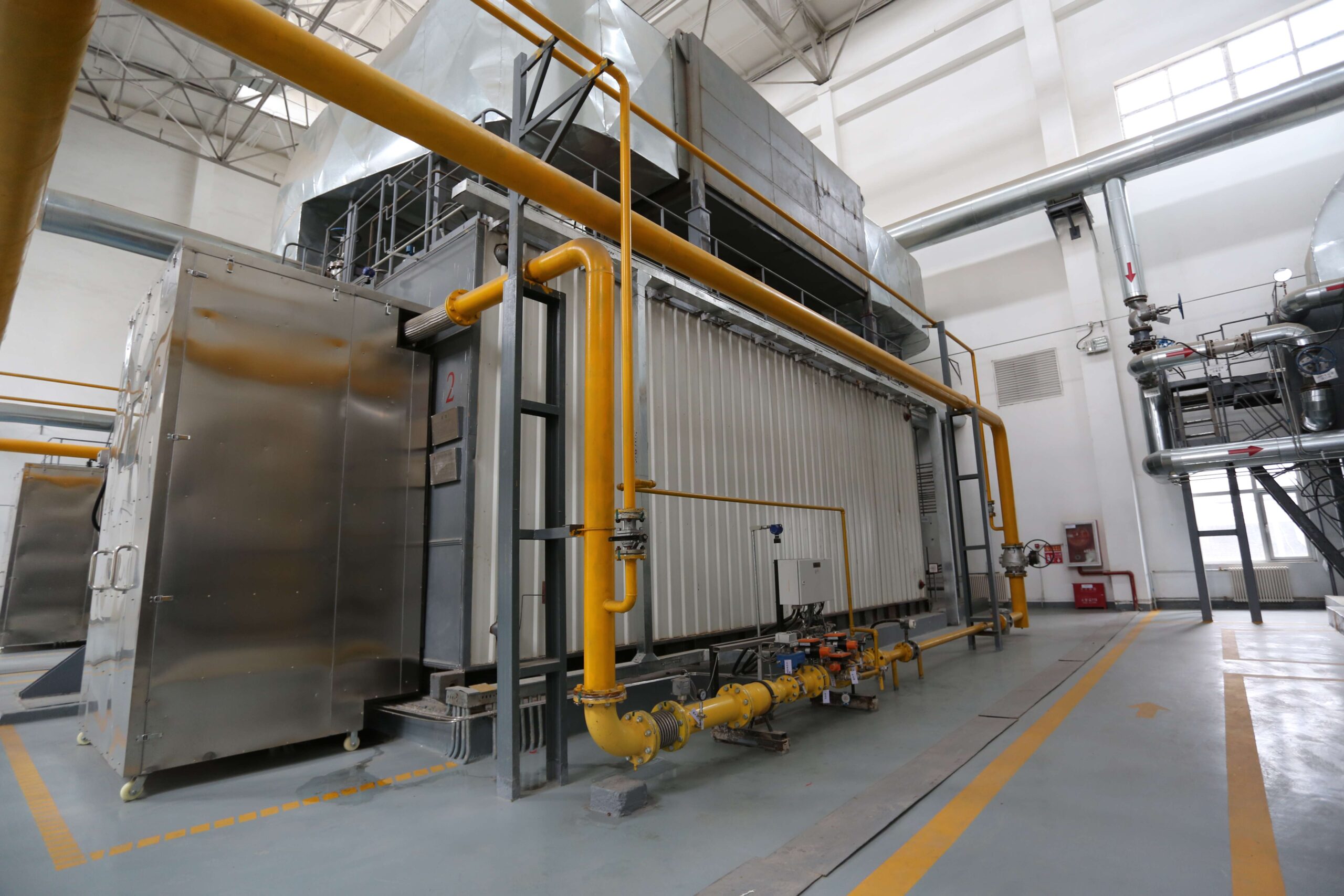
What Automation and Control Systems Are Offered for Performance Monitoring and Integration?
Modern gas-fired boiler systems are no longer mechanical black boxes—they are intelligent energy assets. The efficiency, emissions, reliability, and responsiveness of a boiler depend not only on its thermal design, but on the automation and control systems that monitor and manage it in real time. A boiler’s brain—its PLC, sensors, and interface—must support performance optimization, load responsiveness, emissions tuning, alarm management, and full plant integration.
Buyers must ask suppliers what type of automation system is offered—PLC platform, HMI design, SCADA integration, remote access, and monitoring capabilities—as well as how the system tracks KPIs like fuel usage, O₂ levels, NOₓ emissions, and efficiency. They should confirm if the system supports open protocols for seamless integration with plantwide control systems.
A powerful combustion system is only as smart as the controls that manage it.
Advanced automation and control systems are essential for optimizing efficiency, ensuring emissions compliance, and enabling real-time integration of industrial gas-fired boilers into plant operations.True
Digital control and monitoring platforms provide transparency, predictability, and safety—allowing operators to maintain peak performance and prevent failures through early warnings and remote access.
Key Automation System Features to Discuss with Suppliers
1. What Type of PLC and HMI Systems Are Provided?
| System Component | Function | Preferred Brands |
|---|---|---|
| PLC (Programmable Logic Controller) | Manages burner logic, interlocks, modulation | Siemens, Allen-Bradley, Schneider |
| HMI (Human-Machine Interface) | Touchscreen interface for operator control | Weintek, ProFace, Siemens |
| RTU (optional) | Remote terminal unit for isolated sites | Modbus-compatible |
Ask:
What PLC platform do you use—standard or customizable?
Is the HMI touchscreen and multilingual?
Can the logic be updated remotely or by in-house engineers?
2. What Performance Metrics Are Monitored in Real-Time?
| Key Metrics | Application |
|---|---|
| Steam flow, pressure, temp | Load balancing, turbine interface |
| Fuel flow, burner rate | Fuel cost and combustion curve optimization |
| O₂/CO sensor data | Excess air and efficiency tuning |
| NOₓ, SO₂, CO₂ (via CEMS) | Emissions compliance and auditing |
| Boiler efficiency | Live heat rate, stack loss calculations |
Ask:
Can efficiency be trended by load condition?
Are emissions monitored with integrated sensors or via external CEMS?
Can SCADA display multiple boilers and their comparative KPIs?
3. How Is Safety Managed and Alarms Controlled?
| Safety Function | Control Feature |
|---|---|
| Flame monitoring | UV or IR scanner with alarm relay |
| Trip interlocks | Burner shutdown on fan/fuel/sensor fault |
| Redundancy logic | Dual-channel sensors for critical parameters |
| Alarm prioritization | Tiered logic (warning, critical, shutdown) |
| Auto-purge & restart logic | Programmed sequences for safe relighting |
Ask:
How many alarm categories are defined in your system?
Is there a historical alarm log with timestamps?
Can trips be auto-analyzed for fault traceability?
4. Is the System Ready for SCADA, DCS, or Cloud Integration?
| Integration Capability | Purpose | Protocols Supported |
|---|---|---|
| SCADA interface | Centralized plant monitoring | Modbus RTU/TCP, OPC UA |
| Remote access | VPN or cloud login for diagnostics | Encrypted web-based platform |
| Historian/log export | Performance & emissions logs | CSV, SQL, XML |
| IoT-ready dashboards | Cloud dashboard, mobile alerting | MQTT, REST API |
Ask:
Can you connect to our existing DCS or third-party SCADA?
Do you offer mobile or web-based performance dashboards?
Can reports be automatically exported to our ERP or maintenance system?
5. What Reporting and Analytical Tools Are Included?
| Report Type | Frequency | Content |
|---|---|---|
| Daily performance | Auto-generated | Fuel use, load curve, O₂/CO, trip log |
| Emissions compliance | Monthly | NOₓ, CO₂, SO₂ logs with date stamps |
| Alarm/event log | Real-time + exportable | Time, parameter, reset action |
| Maintenance tracker | Per hour counter | Burn-in hours, filter alerts, service due |
Ask:
Are reports email-delivered or stored locally?
Can reports be customized for regulatory submission?
Is there AI-based recommendation or diagnostics logic?
Example: Automation System on 10 TPH Natural Gas Boiler
PLC: Siemens S7-1500
HMI: 10” capacitive touchscreen, multilingual
Integration: Modbus TCP/IP to plant SCADA
Monitored:
Steam flow, pressure, temp
Burner position, gas valve % open
O₂ sensor, CO analyzer
Efficiency calculator (LHV-based)
Alarm log with 2-year storage
Features:
Remote access via VPN tunnel
Weekly reports emailed to plant manager
Emissions trendline available via CEMS dashboard
Burner auto-tuning feature via CO curve feedback
Summary
Your boiler’s brain matters as much as its burner. A modern industrial gas boiler must not only burn clean—it must think smart. Ask your supplier what PLC/HMI platform they offer, how they monitor performance, how they protect against faults, and how easily their system integrates with your plant’s automation architecture. Choose data-driven combustion. Choose controls that deliver visibility, safety, and savings. Choose a system that monitors what matters—and reports before it fails.
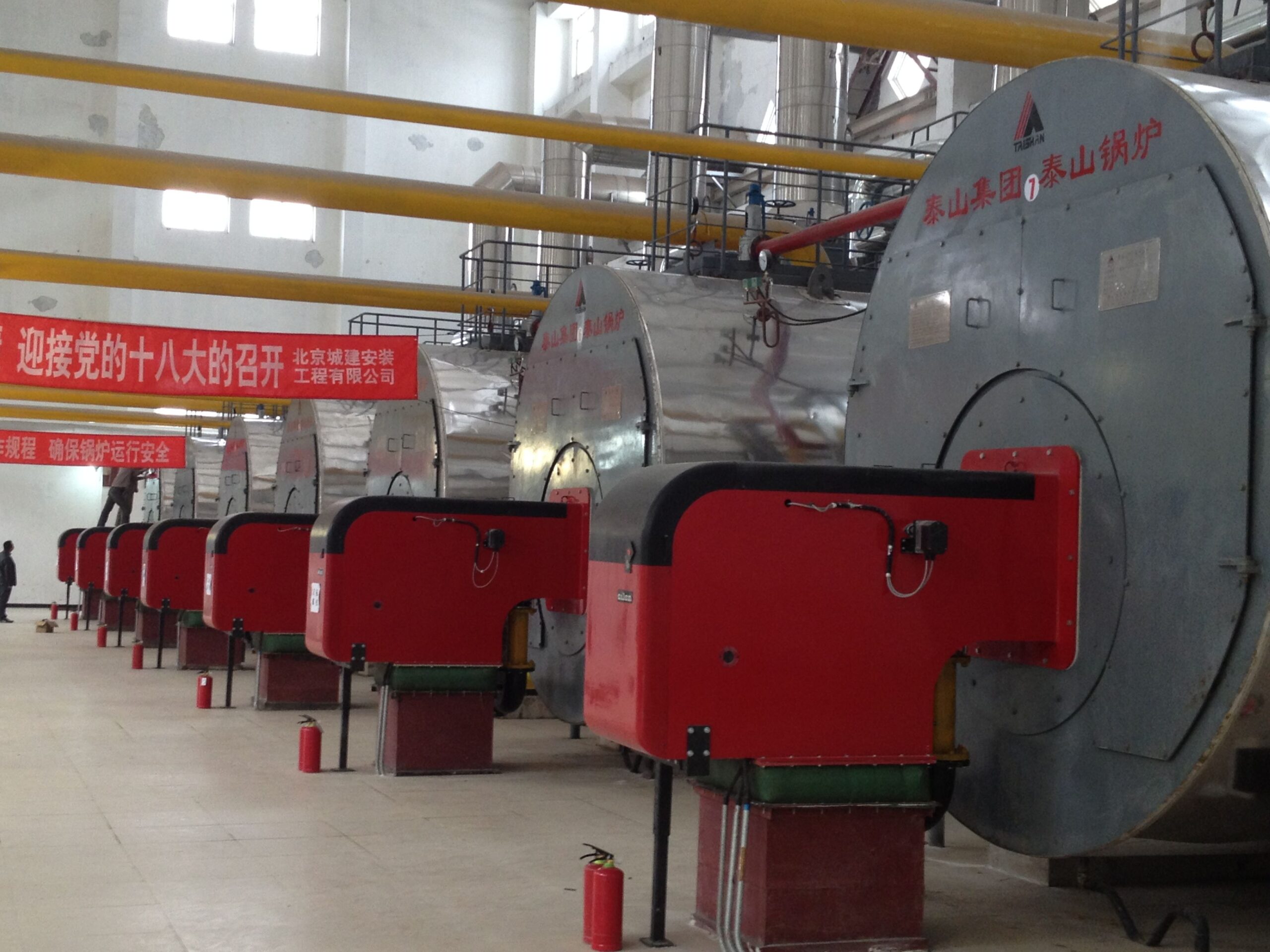
What Are Your After-Sales Services, Spare Parts Availability, and Maintenance Support Terms?
An industrial gas-fired boiler is only as reliable as the after-sales infrastructure that supports it post-installation. Even the best combustion design requires spare parts management, trained service technicians, digital diagnostics, and responsive maintenance plans to stay efficient, compliant, and available. When unexpected failures or emissions drift occur, your ability to resume operations without delay or uncertainty depends on the strength of your supplier’s lifecycle service commitment.
Buyers must confirm exactly what after-sales services are offered, how spare parts are stocked or dispatched, and what maintenance support plans (e.g., annual, multi-year, emergency) are available. This includes response times, warranty terms, digital support, training, and performance monitoring after commissioning.
Service isn’t an accessory—it’s the bridge between capital investment and continuous value.
Comprehensive after-sales service, spare parts logistics, and maintenance support are essential to ensure long-term efficiency, compliance, and availability of industrial gas-fired boilers.True
Without structured support, even high-quality systems face costly downtime, emissions violations, or loss of efficiency due to preventable component degradation.
Key Aspects of After-Sales Support to Ask About
1. What Services Are Included After Commissioning?
| Service Type | Typical Inclusions |
|---|---|
| Commissioning support | Burner tuning, safety trip test, SCADA demo |
| Operator training | HMI usage, trip response, maintenance routines |
| Documentation delivery | QA dossier, wiring diagrams, IOM manuals |
| Warranty support | Parts/labor coverage for defined period |
| Initial inspection | Free follow-up within 6–12 months post start-up |
Ask:
Do you provide on-site commissioning by certified engineers?
Is training included in the handover package?
Are site revisit inspections included within the warranty window?
2. How Do You Handle Spare Parts Logistics and Availability?
| Spare Type | Supply Method | Typical Lead Time |
|---|---|---|
| Critical spares (burner, sensors) | Stocked at regional depot | <72 hours dispatch |
| Consumables (gaskets, filters) | Yearly kit recommended | Delivered with boiler or by contract |
| Long-lead items (motors, panels) | Made to order | 4–12 weeks unless reserved |
| Digital parts tracking | Via serial number/QR | Real-time reorder system |
Ask:
Do you provide a recommended 2-year spare parts list?
Can we pre-stock parts at our site or under consignment?
Is there a digital spares portal or automated replenishment system?
3. What Maintenance Support Plans Are Offered?
| Service Plan | Scope | Ideal For |
|---|---|---|
| Basic (annual) | Burner inspection, control check, emissions review | Low-duty or seasonal systems |
| Extended (quarterly) | Efficiency optimization, NOₓ tuning, sensor calibration | Medium-duty operations |
| Full lifecycle | 24/7 remote support, parts coverage, digital KPIs | High-dependency critical steam applications |
Ask:
Do you offer multi-year service contracts with uptime KPIs?
Are maintenance schedules customized by usage hours or calendar?
Can tuning visits be synchronized with audits or seasonal load shifts?
4. What Is the Emergency Support and Response Protocol?
| Support Tier | Response Commitment |
|---|---|
| Remote support | 24/7 hotline, <2 hrs remote access |
| Field engineer dispatch | <48 hours in-region |
| Parts courier service | Same-day for stocked items |
| Fault escalation | Dedicated technical manager assigned |
Ask:
Is remote diagnostics included with the PLC/HMI?
Are emergency visits SLA-backed or subject to availability?
Do you support response during weekends/holidays?
5. Is There Ongoing Performance Monitoring or Optimization Support?
| Monitoring Tool | Benefit |
|---|---|
| Efficiency dashboard | Tracks real-time heat rate, fuel use |
| Emissions trend log | NOₓ/CO tracking for CEMS compliance |
| Alarm/event history | Preventive fault analysis |
| Maintenance alert system | Service due reminders based on usage hours |
Ask:
Is performance monitoring included in your extended support?
Can data be exported for audits or plant-wide analytics?
Do you provide monthly or quarterly efficiency reports?
Example: After-Sales Support for 15 TPH Gas Boiler
Included at Handover:
On-site commissioning + operator training
Full QA/data book with ITP and emissions certificate
Burner tuning report and CO/NOₓ performance graph
1-year warranty for control panel, burner, actuator
Optional Extended Support Plan:
| Service | Frequency |
|---|---|
| NOₓ recalibration + burner tuning | Quarterly |
| Sensor cleaning/replacement | Semi-annual |
| Alarm history audit + SCADA upgrade | Annually |
| Spare parts resupply based on usage | Auto-ship every 6 months |
Emergency Protocol:
24/7 phone + VPN support
Field engineer within 48 hrs
Same-day spare dispatch (if stocked locally)
Summary
Your boiler’s performance doesn’t end at startup—it’s a lifecycle commitment. Choose a supplier who offers transparent, SLA-backed after-sales services, fast-moving spare parts logistics, and tailored maintenance plans. Ask for real metrics, dedicated engineers, and digital tools that keep your plant running—safely and efficiently. Choose service built for steam. Choose support built for uptime. Choose a partner that stands behind every flame.
🔍 Conclusion
The right gas-fired boiler supplier offers more than a product—they deliver engineering depth, compliance assurance, and responsive support. Asking focused questions ensures you invest in a boiler that performs reliably under your specific operational and environmental conditions. It also reveals how well the supplier can support you over the boiler’s entire lifecycle.
📞 Contact Us
💡 Need help comparing gas boiler suppliers? Our team provides technical reviews, bid analysis, and sourcing support to help you choose the right gas-fired boiler partner.
🔹 Let us help you ask the right questions—and make the right investment—for reliable, efficient boiler performance. 🔥🏭✅
FAQ
What certifications do your gas-fired boilers comply with?
Confirm that the manufacturer meets recognized standards, such as:
ASME Boiler & Pressure Vessel Code
ISO 9001 / 14001 for quality and environmental practices
CE or PED for EU compliance
UL, CSA, or local safety approvals
These certifications ensure legal compliance, reliability, and access to government or utility incentives.
What are the boiler’s efficiency ratings and emissions levels?
Request specific data on:
Thermal efficiency (≥90% for condensing models)
Fuel-to-steam conversion rate
NOx, SOx, and CO₂ emissions
Compatibility with low-NOx burners, heat recovery systems, or economizers
This ensures the system aligns with your environmental and operating cost goals.
What fuel types and operating pressures are supported?
Clarify fuel compatibility and flexibility, including:
Natural gas, LPG, or dual-fuel options
Operating pressure ranges and temperature tolerances
Adaptability for future fuel transitions (e.g., hydrogen-ready designs)
This future-proofs your investment and accommodates changes in fuel availability or policy.
What control systems and monitoring capabilities are offered?
Ask about:
PLC or SCADA integration
Real-time monitoring and alerts
Remote diagnostics or cloud-based analytics
Automation for startup/shutdown and load modulation
Modern controls reduce labor needs and improve efficiency and safety.
What after-sales support, training, and maintenance services are included?
Inquire about:
Warranty terms and service level agreements (SLAs)
Operator training programs
Maintenance packages (annual inspections, burner calibration, etc.)
Spare parts availability and service technician response time
Quality post-sale support ensures reliability, safety, and lower lifecycle costs.
References
ASME Certification Requirements for Boilers – https://www.asme.org
Gas-Fired Boiler Efficiency Standards – DOE – https://www.energy.gov
EPA Emissions Guidelines for Industrial Boilers – https://www.epa.gov
ISO 9001 / 14001 Standards Overview – https://www.iso.org
Smart Boiler Monitoring and Automation Systems – https://www.automation.com
Industrial Gas Boiler Emissions and Fuel Trends – IEA – https://www.iea.org
Vendor Comparison and Boiler Buyer Guides – https://www.bioenergyconsult.com
Maintenance and Service Contract Models – Sciencedirect – https://www.sciencedirect.com
Boiler Procurement Planning Resources – ResearchGate – https://www.researchgate.net
Supplier Ratings and Customer Reviews – Trustpilot – https://www.trustpilot.com

